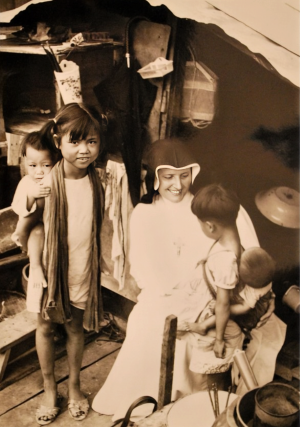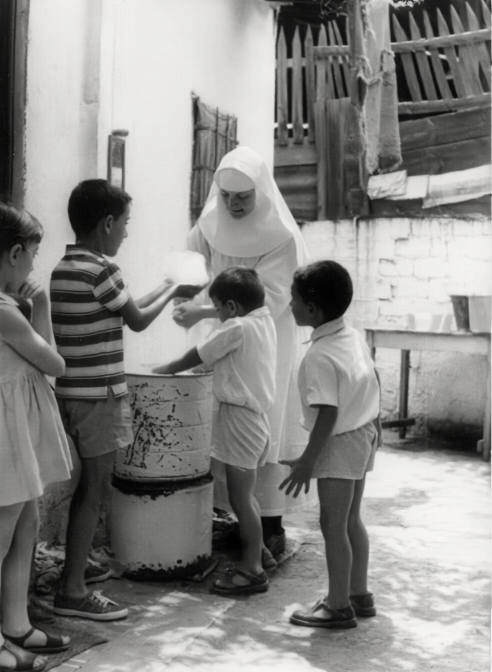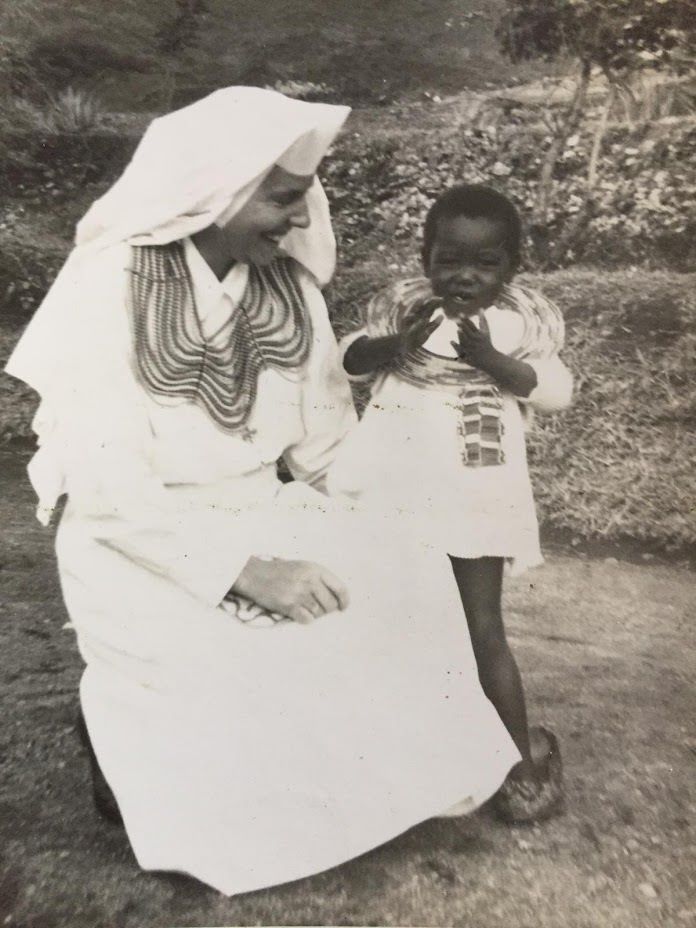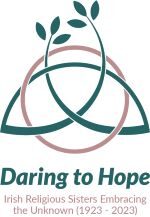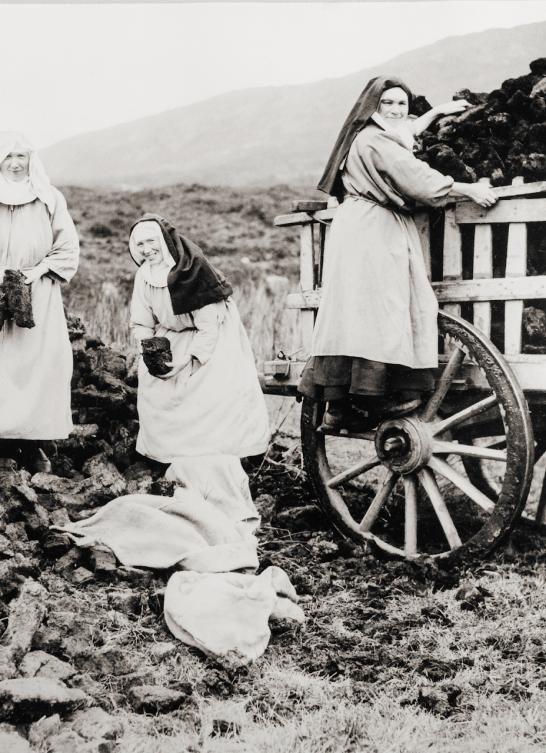
Pioneering Ministries
(1923-1965)
In this section we journey through the Pioneering Era between 1923 and 1965. It tells the story of new missions, migration, emerging congregations, pioneering breakthroughs and institutional/closed living.
View ExhibitionBanners












Information
Pioneering Ministries
Global
This period witnessed the post World War I era, which destroyed empires, changed global alliances, created nation-states and led to Soviet Communism and the rise of Nazism and Fascism. The number of Irish deaths and casualties compounded economic stagnation that led to great poverty in Ireland. During World War II, Ireland remained neutral, thereby successfully asserting the Independence of the new state. In 1929 the Wall Street crash crippled the US economy, leading to a global economic depression. Many Religious Sisters were engaged in various key roles during both world wars, working as nurses and doctors, home-help, builders, researchers, teachers/trainers, food producers, providing refuge, etc.
Political
Ireland made solid strides to establish and consolidate the new state following the destruction brought about by the War of Independence and the Civil War. The Constitution of 1937 and the Republic of Ireland Act 1948 severed Ireland’s last formal links with Britain. There was widespread economic stagnation and emigration. Ireland was admitted to the United Nations (UN) in 1955. The first Irish UN soldiers went to serve as peacekeepers in Lebanon in 1958. New economic development policies led to substantial and rapid growth.
Social
Many areas in Ireland in the early twentieth century experienced levels of poverty considered ‘exceptional’ by Western standards. In Dublin, scores of families were crammed into hazardous and unsanitary tenement buildings (18th/19th century townhouses for the poor). The aftermath of several wars, high unemployment and slow economic growth resulted in the mass emigration of Irish people. The popularity and expansion of the GAA across local communities instilled a sense of nationalism and identity. In 1961, the establishment of RTÉ, the national television service, indicated a modernising Ireland.
Cultural
In 1923 the poet W.B. Yeats becomes the first Irish Nobel Prize laureate and in 1926, the Gaeltacht (any region in Ireland in which Irish Gaelic is the vernacular speech) is officially recognised. Noel Browne, as Minister for Health, was successful in eradicating tuberculosis. Ireland began to participate fully in world cultural programmes, initiating such international events as the Wexford International Opera Festival in 1951. During this era, the State and the Catholic Church exerted greater control over all aspects of Irish life, particularly with regard to women. In the 1960s all of this began to change.
Catholic Church
Following political independence, the Catholic Church played a central role in the subsequent running of the State. Between the 1920s and 1950s, it was at its most dominant, even monitoring what films and publications were deemed suitable for Irish citizens. Vatican II (a global meeting of bishops) was a pivotal turning point, responding to societal change and a call to more radical Gospel living with less rules and control. A combination of social and economic developments changed the direction of Irish life and the place of religion within it.
Religious Life
Irish convent life was strict and largely adhered to a clerical male construct of how life should be lived for the women who joined religious life. New recruits entering the convent hailed from towns and villages across our island and they were expected to cut themselves off from the secular world, adopting a new identity as “religious”. Sisters lived in large convents, controlled by superiors (leaders), under church guidance. This informed every detail of community living, extending to work outside the convent, which was usually confined to education or health. Despite this, Sisters embraced the uncertainty and continued to respond to emerging social issues, nationally and internationally.
Images FromExhibition Banners
The photographs in the photo gallery and on the banners were sourced from member congregations and orders of AMRI representing their work across the globe. They demonstrate diverse vocations across a variety of sectors: social services, healthcare, education, social enterprise, agriculture, arts, home help, activism, environmentalism / ecology, spirituality and sports. Photos and videos were also sourced from Diarmuid O’Murchu, Marjolie Design, Avalon Print, Trócaire, Irish Aid, Radharc Trust, Ken Saro-Wiwa Archive at Maynooth University, Misean Cara, Veritas, MissionVale Ireland, Derek Speirs (photographer), UTV Archive Partnership Project, James Creedon (journalist), RTE Archives.
